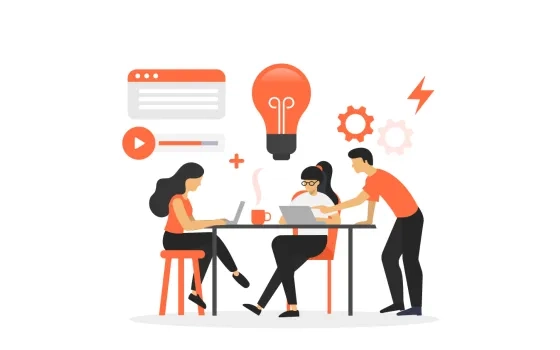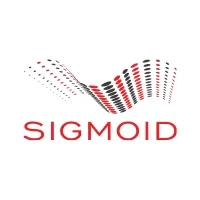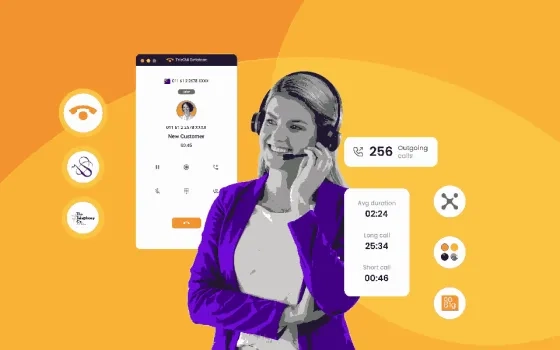Your marketing funnel is made up of all the processes you take to attract people to buy from you, starting with learning about you and ending with them buying from you. Whatever your funnel looks like, there's a good chance you won't get it right the first time. And here is where most individuals go astray.
A marketing funnel isn't a one-size-fits-all plan; instead, it's custom-made for the way your buyer buys. Every consumer has a unique experience with your marketing funnel. You may build content at the top of the funnel, but it doesn't imply consumers will only be able to access it at that point. Someone could, for example, go straight to the middle or bottom of the funnel since they've already identified their problem and your solution, and they're ready to buy.
Here's a quick overview of how to optimize your digital funnel.
- Make yourself seen (Brand Awareness)
Prospects initially become aware of your brand and engage with it at the top of the funnel (TOFU). Because they may not be familiar with your product or service, this stage focuses on creating content and marketing materials that enhance brand recognition. Use this stage to entice potential customers and demonstrate your value.
Make a landing page or an infographic to introduce new visitors to your brand, business, or product. Make a social media post that emphasizes your distinct selling proposition (USP). Pay for advertising that is relevant to your target demographic on social media and in podcasts.ToFu content plays a crucial part in ensuring that you are highly visible for relevant search searches. ToFu content's conversion aim is generally to attract those first visitors to sign up for your email marketing list. A lead magnet, which is a high-quality piece of content, is used to achieve this conversion.
A good example (for coaches & trainers) would be to conduct a free / low cost webinar to create awareness and offer a sample of your knowledge.
2. Gain their confidence (Create Interest & Credibility)
Use this stage to connect with prospects and acquire their confidence, as well as to distinguish your brand. Invite visitors to fill out a survey to discover more about the motivators and hurdles they face when interacting with your company. Create a how-to guide or article that answers queries and removes any doubts or roadblocks that potential buyers could encounter. Share social evidence, such as customer testimonials and reviews, to increase trust.
A good example (for coaches & trainers) would be to share a free eBook with testimonials or videos & blogs.
3. Remote prospect engagement (Make a Personal Connect)
A new technique of customer engagement is remote customer engagement. Remote customer interaction is a new way that modern marketers have discovered for lead creation and customer engagement. Marketers use this method to communicate with potential consumers from afar and make them feel like they're a part of the company by sharing their experiences and comments online and with time the customer becomes familiar with the brand.
A good example (for coaches & trainers) would be a free 30 minutes session with prospective clients.
4. The landing page (Deeper Engagement)
If you've made it this far, congratulations; nevertheless, most individuals leave the process on the landing page. The main cause might be that you ask for too much information from them when you ask for their data. So, at first, just ask for some basic information from them. Following that, in your nurturing campaign, you'll be able to inquire further about them. Assume you're in a relationship. Going deeper requires time and effort to create the trust, so that prospects are ready to share more information, fill your surveys etc.
A good example (for coaches & trainers) would be to stay in touch through opt-in email newsletters.
5. Give them a reason to stay (Offer Value & Deals)
The bottom of the funnel (BOFU) is the final step before a potential client converts. You've piqued their interest, gained their trust, and established a rapport with them.
Give prospects particular reasons to select your brand over your rivals at this point to convert them or may allow visitors to participate in a trial or demo of your product or service.
Make it simple to access and comprehend feature and pricing comparison tables.
Send segmented email marketing campaigns and employ on-site surveys—for instance, send an email to people who have abandoned their shopping cart or place an exit poll on your website on the payment page.
A good example (for coaches & trainers) would be to offer a discount for limited period or a low cost product to sell & introduce your brand.
6. Stand out from rivals (Present a distinct USP)
You are competing with the whole market at the top of the funnel. Anyone selling a solution to your prospect's problem is a possible competitor. Not only have you weeded out indifferent people like you near the bottom of the funnel, but the prospect has also removed the majority of the competitors.
They've usually cut down their choice to only a few possibilities by the preference stage, which is why your marketing effort has to be more targeted. You're not only claiming to have a good product or service at a reasonable price. You're describing how you're different, and better than your competition. This is when your competitive research comes into play. You must be aware of what your competitors are selling, how they are selling it, and how your target audience is reacting to their marketing.
Well-crafted unique value propositions, a statement that simply explains why your product is worth your audience's attention and money — and why rival products are inferior — are among the tools for motivating leads to continue down your funnel at the preference stage. It's also a good idea to include testimonials, reviews, and case studies at this point to back up your claims.
They've already heard about what you're offering. You must now assist them in comprehending how choosing you will have a favorable influence on their life.
A good example (for coaches & trainers) would be to offer a distinct USP eg coach for introverts.
7. Consistency is the key (Stay in touch)
Consistent branding and careful adherence to your defined brand rules and tone are essential regardless of how you modify your approach at the preference stage. At the top of the funnel, consistent branding is critical because it helps newcomers remember your name and narrative. It's crucial towards the bottom of the funnel since it assures your leads that your beliefs and brand promise aren't just a thin veneer that will be peeled away once the transaction is complete.
Stick to your declared values to prove you are who you claim you are. Every encounter should have a high level of polish if you're a glossy, high-tech business. Similarly, if your brand is grounded and modest, too much glamour will detract from your personality. The outcomes will be seen in your financial statements: Businesses with consistent branding generate 23% more yearly revenue than brands with uneven branding.
It is important to stay in touch with your prospects as they may like your product, but may buy in future due to other priorities.
8. The final step
The foundation for conversion has been set if you were successful at the top of the funnel. Someone who previously knew nothing or very little about you now has a decent understanding of your brand, product, or service, as well as the fact that you might be able to solve an issue they're facing. They've completed their due diligence, explored their possibilities, and are now ready to formulate their intent to make a final selection.
At the top of the funnel, where a long-term connection has yet to establish, hard sales approaches are never suitable. Closer to the bottom, on the other hand, a more direct call to action may be appropriate and successful.
The nature of your brand will determine if you want to harden your sales technique. Some companies never go that approach, preferring to offer the prospect the freedom to make an educated decision without being pressured. Others determine that their brand identity doesn't need as much nuance, and instead want to make a forceful and unambiguous presentation to an audience that has already been primed to hear it.
If you go that approach, creating a feeling of urgency can help, as when Amazon adds a little amount of text under the buy button that says "Only 3 left!"
Conclusion
Remember, its good to keep experimenting with formats, platforms, target audiences etc. Keep tweaking your funnel (content or ads) till the time results start coming. Keep tweaking it slightly and carefully to optimise the results / leads / sales.
Make the sales process as smooth and simple as feasible. Many businesses have succeeded in getting leads through their funnels only to lose them just before conversion because their transaction system was too complicated, asked too many questions, or was plain unsightly and undesirable.
Happy Selling !
---------------------------------
Brief Profiles
Dr Amit Nagpal is President & Co Founder of Bloggers Alliance. He is also a Visiting Professor at BIMTECH. To know more visit dramitnagpal.com
Sushmita Grewal is a first year student of MBA at BIMTECH and is specialising in marketing and digital business.

















